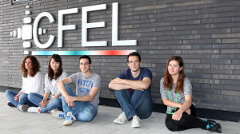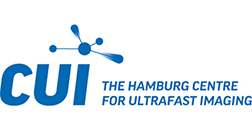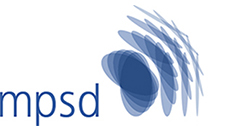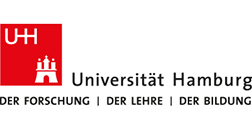- Accelerator Science
- Bio & Medical Physics
- Chemical Dynamics
- Condensed Matter Physics & Nanoscience
- Molecular Imaging
- Spectroscopy
- Strong Field Physics
- Theory
- Ultrafast Optics

Collaborations
Please find here all collaboration of CFEL in alphabetical order:
Since 2012, scientific teams of diverse disciplines such as physics, chemistry, biology, and medicine have been merging under the umbrella of CUI. CFEL is heavily involved in this excellence cluster and Prof. R. J. Dwayne Miller is its first spokesperson. Researchers of the University of Hamburg cooperate with teams from Deutsches Elektronen-Synchrotron (DESY), the Max Planck Institute for the Structure and Dynamics of Matter (MPSD), the European XFEL GmbH (XFEL), and the European Molecular Biology Laboratory (EMBL).
The scientists at DESY are looking for the tiniest building blocks of matter that make up our world, developing innovative high-tech materials and searching for new mechanisms of action for future medications. As one of Germany’s largest research centers, DESY carries out fundamental research that creates new knowledge and new conceptual approaches. DESY is one of the three joint partners at CFEL and supports to advance science with next generation light sources and lasers.
The Hamburg area will soon boast a research facility of superlatives: The European XFEL will generate ultrashort X-ray flashes—27 000 times per second and with a brilliance that is a billion times higher than that of the best conventional X-ray radiation sources. The outstanding characteristics of the facility are unique worldwide. Starting in 2017, it will open up completely new research opportunities for scientists and industrial users.
CFEL is eagerly awaiting the implementation of the X-ray laser:
There is considerable experience and knowledge in the CFEL engineering group in building a wide variety of liquid jet, aerosol beam, and other delivery systems that have been used at four FEL facilities in the world. Considerable work has also been undertaken in the CFEL engineering group in consultation with Pegasus Design Inc to develop concepts and designs for a liquid-jet delivery system for high throughput experiments.
The International Max Planck Research School for Ultrafast Imaging & Structural Dynamics is a joint venture of the Max Planck Institute for the Structure and Dynamics of Matter, the University of Hamburg, Deutsches Elektronen-Synchrotron (DESY), and the European XFEL GmbH founded during the start-up period of CFEL. Their international PhD program offers exciting training opportunities in the areas of ultra-intense electron and X-ray sources for directly observing atomic motions during primary events, and ultrafast imaging over the relevant length and time scales to come to new levels of understanding of the interplay between structure and dynamics.
The Max Planck Institute for the Structure and Dynamics of Matter (MPSD) investigates dynamical phenomena within matter down to the elementary timescales of atomic and electronic motions, the femtosecond or attosecond timescale. The focus is on the use of short wavelength ultrafast probes, such as X-rays or electron pulses, which are capable of measuring atomic and electronic structures in matter of all kinds. The Institute is one of the three partners in the CFEL.
PIER is the strategic partnership between DESY and Universität Hamburg ("Partnership for Innovation, Education and Research)". It is a future-oriented collaboration between two strong partners in the Hamburg metropolitan area which aim to jointly promote top-level education, research and innovation. PIER focuses on the following research fields: Particle and Astroparticle Physics, Nanosciences, Photon Science and Infection and Structural Biology. Additional interdisciplinary areas include Theory of Physics (Wolfgang Pauli Centre) and Accelerator Research (Voss-Wideröe-Centre).
The Stanford PULSE Institute is a Stanford independent laboratory as well as a research center within the Science Directorate of SLAC. The mission of PULSE is to advance the frontiers of ultrafast science. One of their primary tools is the Linac Coherent Light Source (LCLS), the world’s first hard X-ray free electron laser, located at SLAC. CFEL has established a great number of scientific collaborations with PULSE, especially regarding experiments at SLAC. Moreover, CFEL and SLAC take turns in organizing the UXSS Ultra Fast Summer School with generally more than 50 international participants.
The University of Hamburg is the largest research and educational institution in northern Germany. As one of the country's largest universities, we offer a diverse range of taught programs coupled with excellent research. The University of Hamburg at the CFEL pursues a wide variety of scientific goals which are enabled by the new free-electron laser sources. Currently the ASG has eight leading scientists located at CFEL represented in two scientific divisions.The division for Novel Accelerators is constantly improving current state of the art accelerators but also focuses its main research on the development of next generation sources. The Ultrafast Science division is engaged in the various research topics around the application of synchrotron, FEL and laser radiation.









